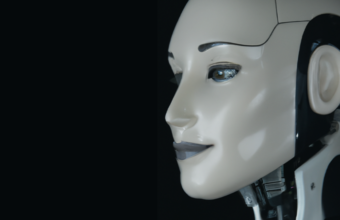Harness your IoT Data at Scale
In this blog, we discuss how to Harness your IoT Data at Scale in your organisation. In 1999, Kevin Ashton, the technology pioneer coined the term “the Internet of Things” to describe a future world where the internet is seamlessly connected to the physical environment we live in via billions of sensors. Less than a decade later, sometime in 2008/2009, that foresight really hit home when the Internet of Things was semi-officially “born”, that is the point when there were more “things/devices” connected to the internet than people.
It is estimated today that there are over 30 billion connected IoT devices. Each of these devices is collecting, processing, and transmitting data – a lot of data. In fact, its estimated (very big number alert!) that over 4 zettabytes of data are being generated – that’s a 4 followed by 22 zeros. In anybody’s world that is a lot of data.
However, what does this mean for a typical organisation.
What use is it to harness IoT Data?
A lot of IT departments within organisations will look at the prospect of harnessing IoT data with horror. They will probably have the view that their organisation is already “drowning in data” even without the addition of billions of more rows of IoT data.
However, some of the most significant business potential of data lies in how it can be used for visualising the customer journey, enhancing the customer experience, and growing a customer base. Having customers using IoT devices and collecting this data gives an organisation a substantial opportunity to obtain information about their customer’s habits.
Let’s consider a smart home and in particular energy consumption. Lots of energy providers and 3rd parties now supply “smart meters” for your home, these connected meters have the ability to collect data relating to energy consumption (electricity and heat) throughout the home.
This gives the customer a device that offers insights into their own energy consumption and allows them to react to the information it displays. Furthermore, by permitting the energy supplier to collect and analyse this data the supplier can proactively make recommendations to the customer on how to improve their energy consumption. Advanced analytics and data science can allow the supplier to really understand the needs and behaviours of their customer. For example, if the customer has provided permission, the supplier can:
- predict future energy consumption and therefore more accurately manage the balance in customers energy accounts;
- calculate the profile of the occupants, for example, whether they are working from home, are of school-going age, and therefore provide a dynamic time of day pricing for energy;
This information can enable energy providers to alter their services to not only retain their current customer base but also target new customers in a highly competitive market.
So if I’m collecting this data as an organisation, how do I harness it?
Collecting this data and more specifically leveraging it to suit the needs of your business is no easy task. However, this process has been made much simpler with the use of cloud technology. Cloud technology enables us to build and develop analytical processing environments that can handle large volumes of data fast and effectively, making it possible to iteratively prove and deploy analytical models without spending substantial funds on physical hardware.
There are 4 key rules your organisation needs to consider when harnessing IoT data.
Use the edge. The majority of IoT devices can perform “edge processing”. This means data is processed at the source, i.e. on the device itself. This edge processor collects the raw data and aggregates it, only sending the data to your cloud platform in bursts – taking a lot of real-time processing effort off your platform.
Use the hub. An IoT Hub component in your cloud platform is a service that allows secure and reliable communication between your IoT devices and your platform for both receiving data from the devices and also managing the hundreds and thousands of devices.
Use advanced analytics. The real value from IoT data comes from the processing, analysis, and transformation of this data into actionable insights. This is where a data management & analytics component, or set of components, comes into play. These should handle both real-time processing of streaming data to provide instant actionable insights, as well as the ability to efficiently store the ingested data for further advanced analytics and machine learning modelling.
Use your line of business systems. As you stream and store data via your analytics platform, you should now have the processed insights available to all your enterprise systems through request-response APIs or published on a pub/sub middleware. So, if a customer phones your service desk about a problem your agent can see the most up-to-date information
The world of IoT may be about big inconceivable numbers and seemingly abstract use cases but we know that once customers dip their toes in the water with a couple of small initiatives they rapidly realise that IoT is an essential part of their future business model.


